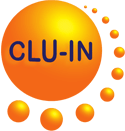Vapor Intrusion Mitigation (VIM-1)
Sponsored by: Interstate Technology and Regulatory Council
Archived: Tuesday, June 15, 2021
2021-06-15
Interstate Technology and Regulatory Council
When certain contaminants or hazardous substances are released into the soil or groundwater, they may volatilize into soil gas. Vapor intrusion (VI) occurs when these vapors migrate up into overlying buildings and contaminate indoor air. ITRC has previously released guidance documents focused on VI, including the "Vapor Intrusion Pathway: A Practical Guidance" (VI-1, 2007) and "Petroleum Vapor Intrusion: Fundamentals of Screening, Investigation, and Management" (PVI, 2014). However, ITRC has received multiple requests for additional details and training on mitigation strategies for addressing this exposure pathway.
The ITRC Vapor Intrusion Mitigation Team (VIMT) created ten fact sheets, 16 technology information sheets, and 4 checklists with the goal of assisting regulators during review of vapor intrusion mitigation systems, and helping contractors understand the essential elements of planning, design, implementation, and operation, maintenance and monitoring (OM&M) of mitigation systems.
The Vapor Intrusion Mitigation training is a series of eight (8) modules, presented over two sessions as noted in the graphic below.
The Vapor Intrusion Mitigation training series provides an overview of vapor intrusion mitigation and presenting information from the ITRC fact sheets, technology information sheets, and checklists (VIM-1, 2021):
- Introduction & Overview of Vapor Intrusion Mitigation Training Team
- Conceptual Site Models for Vapor Intrusion Mitigation
- Public Outreach During Vapor Intrusion Mitigation
- Rapid Response & Ventilation for Vapor Intrusion Mitigation
- Active Mitigation Approaches
- Passive Mitigation Approaches
- System Verification, OM&M, and Exit Strategies
- Remediation & Institutional Controls
- How to locate and utilize the VIM-1 fact sheets, technology information sheets, and checklists
- The importance of a VI mitigation conceptual site model
- How public outreach for VI mitigation differs from other environmental matters
- When to implement rapid response for vapor intrusion and applicable methodologies
- The differences between remediation, mitigation, and institutional controls
- Available technologies for active and passive mitigation, and design considerations for various approaches
- How/when/why different mitigation technologies are appropriate
- How to verify mitigation system success, address underperformance, and develop a plan for discontinuing a mitigation system
While the training makes every effort to keep the information accessible to a wide audience, it is assumed that the participants will have some basic technical understanding of chemistry, environmental sciences, and risk assessment. As with other emerging contaminants, our understanding of vapor intrusion mitigation continues to advance. This training provides the participants with information on areas where the science is evolving and where uncertainty persists.
Accessibility, Recording, and Content Disclaimer
Rehabilitation Act Notice for Reasonable Accommodation
It is EPA's policy to make reasonable accommodation to persons with disabilities wishing to participate in the agency's programs and activities, pursuant to the Rehabilitation Act of 1973, 29 U.S.C. 791. Any request for accommodation should be made to the ITRC Training Program at 202-266-4932 or , preferably one week or more in advance of the webinar, so that EPA will have sufficient time to process the request. EPA would welcome specific recommendations from requestors specifying the nature or type of accommodation needed. Please note that CLU-IN provides both alternate phone call-in options and closed captioning for all webinars, and requests for these specific accommodations are not necessary.
Webinar Recording
By participating in this CLU-IN webinar, you automatically agree to authorize recording of audio and visual content presented during this live event and consent to subsequent use of this recording in the public domain by the U.S. Environmental Protection Agency. This recording may include questions, comments and poll responses provided by you during the live event in addition to your name, voice, image or likeness. This recording will be made available after the conclusion of the live event as part of the CLU-IN webinar archives, and will remain available indefinitely. If you do not wish to consent to the recording, please do not join the live event, and contact Jean Balent at 202-566-0832 or balent.jean@epa.gov to discuss your concerns.
Content Disclaimer
This webinar is intended solely to provide information to the public. The views and opinions expressed as part of this webinar do not necessarily state or reflect those of the U.S. Environmental Protection Agency. It is not intended, nor can it be relied upon, to create any rights enforceable by any party in litigation with the United States, or to endorse the use of products or services provided by specific vendors. With respect to this webinar, neither the United States Government nor any of their employees, makes any warranty, express or implied, including the warranties of merchantability and fitness for a particular purpose, or assumes any legal liability or responsibility for the accuracy, completeness, or usefulness of any information, apparatus, product, or process disclosed, or represents that its use would not infringe privately owned rights.
Presenters:
- To be announced
Moderator:
Nicole Henderson, ITRC Contractor (nicole.henderson@hmenviro.com)
Webinar Slides and References:
Webinar Slides and References:
Additional Resources:
If you have a suggested topic or idea for a future CLU-IN internet seminar, please contact:
Technology Integration and Information Branch
PH: 202-566-0832 | Email: balent.jean@epa.gov
Technology Integration and Information Branch
PH: 202-566-0875 | Email: adam.michael@epa.gov




